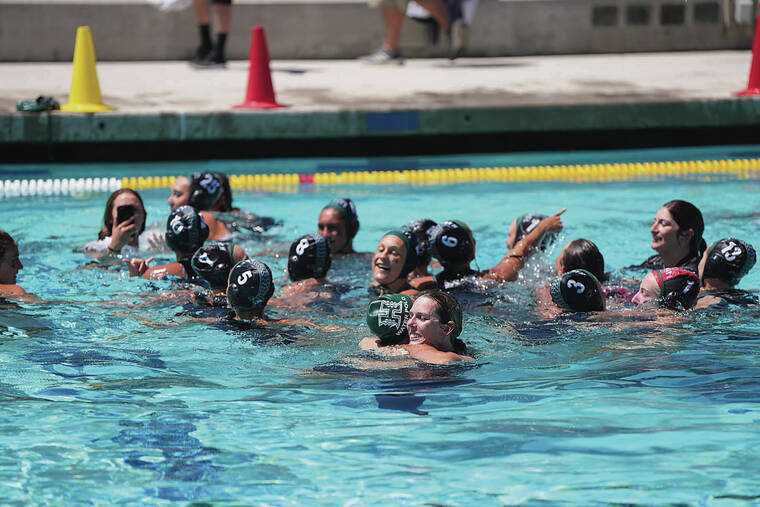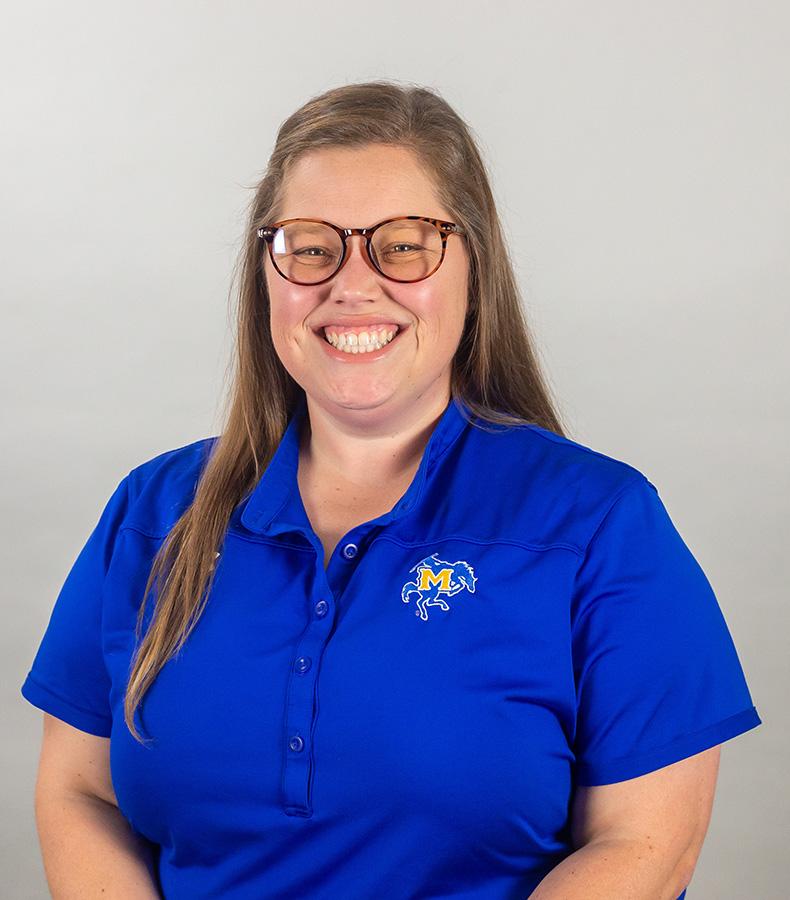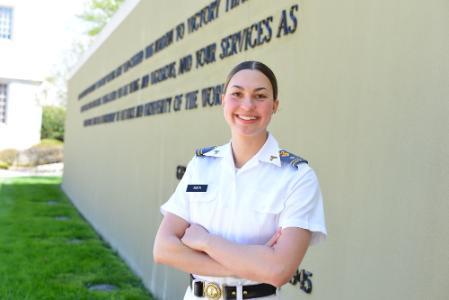Select an option below to continue reading this premium story.
Already a Honolulu Star-Advertiser subscriber? Log in now to continue reading.
Australian Tom Hoad holds a special place on the topography of the Water Polo Australia Ltd landscape, being its patron, life member, legend and hall of fame inductee. He is also at the pinnacle of aquatics, having been inducted to the International Swimming Hall of Fame (ISHOF) in 2011 as a contributor and helped run […]
Australian Tom Hoad holds a special place on the topography of the Water Polo Australia Ltd landscape, being its patron, life member, legend and hall of fame inductee.
He is also at the pinnacle of aquatics, having been inducted to the International Swimming Hall of Fame (ISHOF) in 2011 as a contributor and helped run two FINA World Championships (1991 and 1998).
He has contributed much to the sport since initially being selected for the 1960 Rome Olympics as a player, moving into a coaching role for the four Olympics after his playing years and then coaching all manner of teams to the current day as he looks after school kids in their development.
Just known as “Tom” by youngsters and peers alike, the multi-linguist has seen it all and been involved in the development of the rules at one stage. He has been consulted often by FINA and international coaches and referees on what he thinks about the rules.
Scoring Goals asked him what he thought of the current batch of rules.
“With regard to the new changes, which were instigated controversially, I think they are better than the old rules.
“The shortening the pool is an improvement, allowing more goals. It does away with transition time. (With the 30m pool) television cameras focused on the goalkeeper holding the ball. There was no activity on the ball and the goalkeeper would hold the ball for five-six seconds before making the release pass. It’s more television appropriate now.
“In Australia, we’ve played those rules (25 seconds possession and 15 seconds for the corner restart) and it’s made the extra-man (situation) much shorter and means they have to shoot quicker. More turnovers and much faster. Both teams have more opportunities to score goals, which means more players have to be more proficient at shooting.
“The Australian-New Zealand (World Aquatics Championships Oceania qualification series for men in April) games were very exciting. Shooting and ball handling are far more valuable than ever before,” Hoad said.
Two sets of rules were considered post-World War II with a South American version and a European set, with Europe winning the debate. Former United States of America Water Polo and former ISHOF CEO Bruce Wigo is an ardent fan of changing rules for the better and has stated in the past that the South American version should have held precedence.
Hoad said that these rules meant players could have five ordinary fouls before being sent from the match, much like basketball, meaning no-one wanted to foul, thus reducing referee whistles. It made the game far more less contact, which I think is an important factor.
Debate in FINA at the time decided between how the Europeans were playing it and how the Americans were playing it.
As the sport was more popular in Europe in places like Sweden, France, Belgium and England where it began, Europe decided it was its decision, which Wigo maintains was the wrong decision.
“His logic makes sense to me,” Hoad said.
“One of the major changes was that on the referee’s whistle you had to stop. That was then replaced with the game becoming much more mobile.
“There were a few limitations that the FINA Bureau gradually changed. One was with some logic behind it. Throw the ball over halfway. Before that you couldn’t. You played a two-two-two and because the goalkeeper couldn’t go over halfway, we had designated backs and designated forwards.”
Hoad travelled to Budapest in 1962, and enthused over the development of the sport there because of the thermal water.
“The Csaszar-Komjadi Sportuszoda pool was not chlorinated or filtered but was warm all year round. It was the first water polo-specific built pool in 1927. They built the indoor pool at Margaret Island in 1930 and the outdoor pool was filled with thermal water. Green thermal water. It was a huge advantage.”
He spoke also of the three main Hungarian pools in Szentes, Szeged, and Szolnok while many other towns received a lot of thermal baths.
“It was one of the reasons Hungary, a landlocked country, became so proficient in water polo.
“When a Croatian, Bata Orlic, who hailed from Dubrovnik, saw what was available in Hungary, he insisted that Yugoslavia played all-year round when he returned as director of Yugoslav water polo.
“The Hungarians always beat Yugoslavia even though there was a lot of water polo played along the coast.
“The rules in first division in Yugoslavia stated that unless you had access to an indoor pool all year round, you could not play in first division. The idea was so they could beat the Hungarians, which they eventually did.
“Korcula had only an outdoor pool and won the Yugoslav premiership that year, including (Olympic silver medallist) Bobo Trifunovic, who coached in Perth.
“Korcula maintained it was a Serbian plot to get them out of the competition, which it wasn’t. That was the beginning of playing 12 months a year,” Hoad said. “Bit by bit, Yugoslavia improved their world status.”
FINA slowly made changes with the biggest following the European Championships in Utrecht in 1967. The public did not like seeing six playing on five. They introduced a foul after a foul. If you had three penalty points you were excluded. It was introduced without trialling. I said we should trial it first. It ended up being a disaster punishment that did not fit the crime. (You accumulated three points and then you got a penalty).
“You could stop a certain goal (by pulling the leg of a counter-attacker) and only gained a third of a point penalty,” Hoad said.
“This rule was thrown out at the first opportunity and there was a lot of debate about it. There was nobody who was vehement that it should remain.”
Speeding forward to current times, Hoad said that “dead time” is reduced and swimming reduced.
The recent introduction of the shorter pool length and possession times for men have been greeted warmly by Hoad and laments that European competitions have not had a chance to play these rules. Only European men’s teams contesting the 2025 World Cup had a chance to play these new rules.
He pointed to the upcoming World Aquatics Championships in Singapore where the rules have been defined further with a 28-second possession time for men and women, plus an 18-second re-possession time.
“We’ll see after the World Championships how this turns out as no teams have had the chance to play these in competition.”
World Aquatics Technical Water Polo Committee Chair Tamas Molnar confirmed the rule change this week, stating that the 25m pool and 28-18-second combination would be played by both genders.
Hoad champions the recent Australian league finals in which the men’s gold-medal final finished 22-20 with USA import Hannes Daube scoring 12 goals, only two of which were penalty goals. Aussie Shark Luke Pavillard scored 10 goals in a finals encounter, four of which were penalty goals.
“I thought it was an improvement. Closer to basketball. The elimination of referees’ whistles is very difficult to achieve. I have listened to Bruce Wigo’s arguments and I think they have traction,” Hoad said.
I was coached by an eight-time Olympian.
A lesson he taught me will stick with me for life.
In 2011, I was 3 years into my junior water polo career.
I’d been playing for a club called the Dolphins when the coach of a competitor club and 8-time Australian Olympian, Tom Hoad,… pic.twitter.com/pRZGXuIUxm
— Alex Brogan (@_alexbrogan) October 3, 2024
Editor’s Note: Tom Hoad has been inducted to the Western Australia Sporting Hall of Champions (1996), Water Polo Australia Hall of Fame (2009), the International Swimming Hall of Fame (2011), and the Sport Australia Hall of Fame (2021).
Select an option below to continue reading this premium story. Already a Honolulu Star-Advertiser subscriber? Log in now to continue reading. The University of Hawaii women’s water polo program, coming off back to back appearances in the national semifinals, announced two signings Monday. Coach James Robinson, entering his second season at the helm, said Asimina […]

Already a Honolulu Star-Advertiser subscriber? Log in now to continue reading.
Sandi Rodriguez was named Assistant Director of Student Athlete Services in October 2018 after serving as the Administrative Assistant to Soccer, Softball and Tennis programs since 2015. Her current sport oversight includes Baseball, Soccer, Softball, Tennis, Beach Volleyball, & Indoor Volleyball. Prior to this appointment, Rodriguez served as an Administrative Assistant for Women’s Basketball, Men’s […]

Her current sport oversight includes Baseball, Soccer, Softball, Tennis, Beach Volleyball, & Indoor Volleyball.
Prior to this appointment, Rodriguez served as an Administrative Assistant for Women’s Basketball, Men’s Golf, Women’s Golf, Soccer, Softball, and Tennis from July 2015.
The Gray, LA. native, began her career as the McNeese Academic Study Lab Coordinator from January 2011 – June 2013. She received her Associate degree from McNeese in December 2010 and her Bachelor degree in December 2012.
Rodriguez is deeply involved in the community serving multiple roles within Pack 107 as a committee member, unit fundraising chair, unit advancement chair, and a pack administrator.
Rodriguez and her husband Jason have one son, Braedon.
LONG BEACH, Calif. – Long Beach State Men’s Basketball has secured the commitment of Demarshay Johnson Jr., as the big man will reunite with Chris Acker, transferring to the Beach from San Diego State. Demarshay Johnson Jr. | Center | 6-10, 220 | Richmond, Calif. A high-level Division I transfer with experience and […]

Two high jumpers refused to accept their medals at Saturday’s Oregon state track and field championships, opting instead to protest the inclusion of a transgender athlete at Hayward Field. Tigard’s Alexa Anderson and Sherwood’s Reese Eckard (who finished third and fourth, respectively) stood on the back side of the podium and didn’t grab their medals. […]

Two high jumpers refused to accept their medals at Saturday’s Oregon state track and field championships, opting instead to protest the inclusion of a transgender athlete at Hayward Field.
Tigard’s Alexa Anderson and Sherwood’s Reese Eckard (who finished third and fourth, respectively) stood on the back side of the podium and didn’t grab their medals.
One of the athletes, who tied for fifth in the high jump, is a transgender girl. The Oregonian/OregonLive is not naming the transgender athlete to protect her privacy.
Video from the day showed that a podium official gestured for Anderson and Eckard to move out of the way of the podium.
As of the 2024-25 school year, the OSAA’s policy on gender identity participation (Policy 37) allows student-athletes to participate in the activity that aligns with their “consistently asserted gender identity.”
Anderson told Fox News that she and Eckard protested at the podium in response to the OSAA’s policy that allows transgender students to participate in the sports that align with their gender identity.
“We didn’t refuse to stand on the podium out of hate. We did it because someone has to say this isn’t right,” she told Fox News. “In order to protect the integrity and fairness of girls sports we must stand up for what is right.”
The OSAA did not immediately respond to a request for comment about the student protest.
While there were no audible complaints from the crowd during the weekend, some attendees wore shirts that showed their displeasure with the OSAA’s current policy. Many wore shirts that said “Save girls sports” or shirts with “XX” on them to symbolize female chromosomes.
There was also some backlash on social media among anti-transgender accounts on X (formerly known as Twitter) like Riley Gaines and former tennis champion Martina Navratilova.
At the track and field state championships in 2024, McDaniels’ Ada Gallagher became the first known transgender student-athlete to win an individual state championship in Oregon. The OSAA keeps track of participation numbers in all activities, but the data does not include what gender a student was assigned at birth.
Gallagher’s time at Hayward Field last spring was a much different sight from this year’s state championships.
Last year’s 200- and 400-meter podium finishers were accompanied by Eugene law enforcement, and brought out to receive their medals by a different door on the ground floor at Hayward Field to ensure that they didn’t cross in front of fans in the stands.
Every time Gallagher’s name was called in the 2024 state meet, boos could be heard from the stands. They were loudest for the 200-meter dash final she won and were even louder when she was presented her medal.
This year, the Class 6A high jumpers were escorted to the field by an OSAA staffer. There was no visible law enforcement presence during the podium ceremony.
“We always review and try to learn from our events about how we can continue to provide a meaningful, championship experience to all student-athletes,” OSAA Executive Director Peter Weber told The Oregonian/OregonLive.
In February, President Donald Trump signed an executive order aimed at preventing transgender women and girls from participating in the sports that align with their gender identity.
A month later, that order was followed up with the U.S. Department of Education’s Office for Civil Rights opening an investigation into Portland Public Schools and the Oregon School Activities Association, claiming that the two entities are in violation of Title IX by allowing a transgender girl to compete in girls sports.
Weber has told The Oregonian/OregonLive that a policy that discriminates based on gender identity could lead to a loss of funding for schools under Oregon state law.
— Nik Streng covers high school sports in Oregon. Reach him at nstreng@oregonian.com or @NikStreng
A stellar season for the Nelson Volleyball 17U Club has come to an end, with the club finishing among the best in BC. A month after winning the Division Two Provincial Championships in Richmond, the team of West Kootenay teens competed in the 200-team Seattle Evergreen Classic May 24-26, finishing in the middle of the […]

A stellar season for the Nelson Volleyball 17U Club has come to an end, with the club finishing among the best in BC.
A month after winning the Division Two Provincial Championships in Richmond, the team of West Kootenay teens competed in the 200-team Seattle Evergreen Classic May 24-26, finishing in the middle of the pack of 28 teams in their division.
Nelson played eight close games with teams from US cities including Tacoma, Coeur d’Alene and Seattle.
Coach Sara Smith says the Nelson Club has come a long ways, languishing in Division Five only two seasons ago, but now amongst the best teams in BC.
“The arc of the team was perfect,” says Smith.
“They peaked in provincials, they came together and excelled at just the right time.”
The Richmond finals were the culmination of the Volleyball BC Super Series, with tournaments in Langley and Vernon as well.
“All the girls came in as athletes but left as real team mates,” says NVC captain Gianna Davidson, “we learned how to play as one, not just for ourselves.”
Davidson is one of four Grade 12s leaving the team, along with New Denver’s Ria Kosling, Nelson’s Paityn Lake and Crawford Bay’s Georgia Shuel.
Graduating player, and NVC alumni Kara Strong, who moved to join the Fraser Valley’s legendary Rain City club in January, was selected to the National U17 All Star Team, making her one of the top six 17U players in Canada. Strong went on to lead Rain City to a national club championship.
Smith, a former college player and mom of three who returned to club and school coaching for the last six seasons, says NVC has a promising year ahead.
“We’ve got a lot of girls coming up for next year and we’re going to field a 18U team,” says Smith, “we’ll see if we can break into the top 12 teams in the province.”
Be the first to know! Don’t miss out on breaking news and daily updates in your area. Sign up to MyNelsonNow News Alerts.
What truly defines Virginia Military Institute are the people. Cadets, faculty, and staff, both past and present, are what make it “No Ordinary College.” I Am VMI showcases the outstanding individuals who have accepted the challenges and embraced the spirit of VMI. Their perspectives provide authentic insights into life at the Institute and the value […]
What truly defines Virginia Military Institute are the people. Cadets, faculty, and staff, both past and present, are what make it “No Ordinary College.” I Am VMI showcases the outstanding individuals who have accepted the challenges and embraced the spirit of VMI. Their perspectives provide authentic insights into life at the Institute and the value of this unique military college.

Major: International Studies
Hometown: Ontario, California
Featured Activities: NCAA Division 1 Water Polo | Hotel Co. Commander 2025-26 | Honors Program
Post-Graduation Plans: Government Intelligence
Sadie Smith ’26 was looking for a college that could prepare her for a successful career and life. She said Virginia Military Institute is a place like no other and it offered the kind of lifestyle she was striving for.
“I am a cadet-athlete and VMI makes it possible to balance intense academics, sports, and rigorous military obligations,” she said. “VMI has given me so many tools to succeed and incredible leadership opportunities within the Corps and on the water polo team. I knew I would face many challenges here, but I was looking for that and it has made me into who I am today. VMI has provided me with unique opportunities to build good discipline, honor, and incredible character while putting service before self.”
As an international studies major, she has discovered a passion for national security.
“I enjoy seeing various viewpoints on topics, as well as the variety of skills political science knowledge helps build like writing, reading, debating, and organization. I added a computer science and national security minor because it is very applicable to the field of work that I would like to pursue,” she explained.
Smith went on to highlight the growth her professors encourage. “I especially value the academic challenge here and how well I have gotten to know the professors in the international studies department, they are incredible and always looking to help me succeed.”
She said her experience at VMI has been transformational — for both herself and for her water polo team. VMI has served as a place where she can balance Division I athletics, a challenging major, ROTC, and the opportunity to partake in rank positions within the Corps of Cadets.
“VMI is an environment that fosters professionalism and accountability on a daily basis, which maintains a structured military lifestyle,” she said.
With the opportunity to hold rank, she’s been able to train new cadets by establishing a good culture and spirit. Smith has also been able to balance her responsibilities by practicing good time management skills that have made her a proficient worker, team member, and friend.
“There are very few schools that make it possible to do this, and regardless if you are commissioning or not, you can be involved in incredible leadership opportunities,” she said. “I am involved in training incoming rats at VMI, and have developed so much as a leader and feel that being on a team doing this we give back to VMI by helping to form the incoming rats into a class and setting individuals up to live a successful life here. This all boils down to the connection VMI cadets have with each other and alumni that are long lasting and unlike any other.”
She said she’s proud to be a VMI cadet because she’s been able to embody honor and discipline.
“There is an incredible culture here of hard work and dedication, and I feel that I can rely on anyone to be supportive in the VMI community,” she commented. “The honor system instilled and the ability to sustain it makes VMI special. Discipline and hard work are highly valuable here and will pay off due to all of the incredible opportunities VMI has to offer.”
Although she believes that everyone has the potential to be a leader, she credits VMI for giving her the confidence and support to grow as one.
“This requires facing challenges that are not always pretty or fun in the moment, but they have really shaped me into a well-rounded individual and given me resilience and confidence to attack any challenge with effort and perseverance,” she admitted. “VMI has shown me that when you put your mind to something and are purpose driven, then you can accomplish your goals in all aspects of life.”
Her future hopes include working for the Defense Intelligence Agency. This summer, she is well on her way to that goal with an internship with the agency.
“I feel that VMI has prepared me as a well-versed leader to be able to succeed at this internship and to go out of my comfort zone,” she said. “I feel excited to work in a team environment and hope to receive further opportunities with this agency later after graduation. VMI has also taught me to be prepared for the unexpected and that not everything goes your way all the time. I like to keep an open mind and know that the skills I have learned here will aid me if I receive a job, go to graduate school, or take time to travel after VMI.”
Overall, VMI has given her relationships she knows will last for life.
“I have made so many amazing friends and have had the opportunity to interact with and work with incredible people, teammates, coaches, and professors,” she explained. “VMI, being a small community built on integrity and resilience, allows people to form long lasting bonds and relate significantly on a personal level. Everyone here is on their own path and working at their own goals, however, I love how cadets still feel very connected. VMI also has an amazing support system and resources to succeed in athletics, academic, and military.”
– VMI –


Portal Update – Basketball and Gymnastics Take Hits


The Program, a New Basketball Training Facility, Opening in Greenpoint This September


Portal Update – Basketball and Gymnastics Take Hits


Jon Jones answers UFC retirement speculation as fans accuse champion of 'holding the belt …


2025 NCAA Softball Tournament Bracket: Women’s College World Series bracket, schedule set


When Stephen Curry Shocked The World


THE FINAL CALL: Golden State Warriors 2021-22 NBA Champions


BYU women's basketball guard injures ACL twice


Xavier Legette taught Marty Smith his signature celly


They need to add a gorilla next 